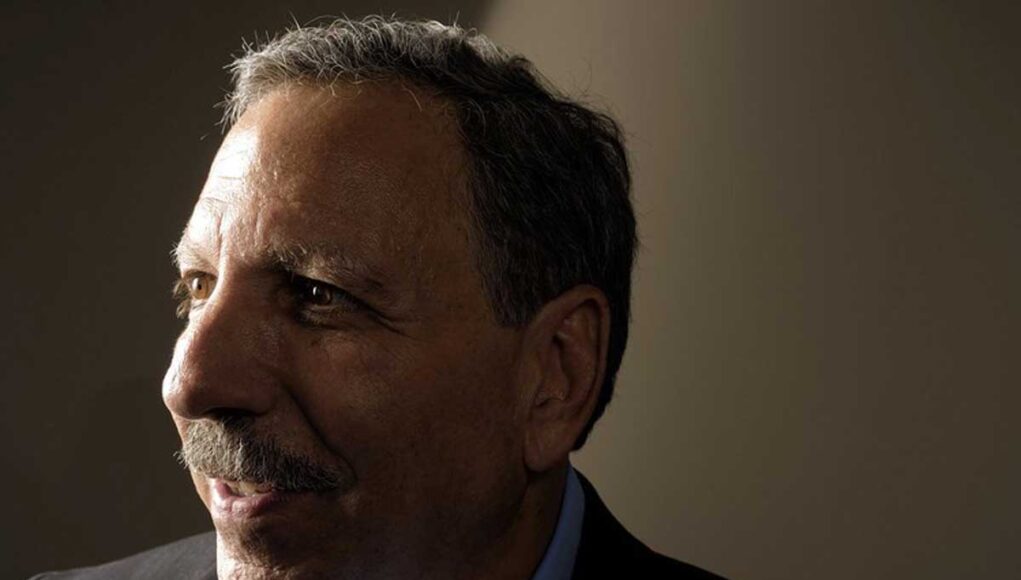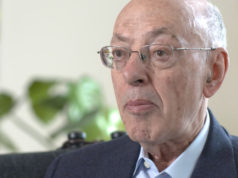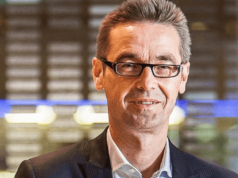“Early on I was a leader who acted like an architect. I felt I needed to set direction and create plans and vision that my people could follow. I learned to be more of a caretaker. I set general direction and give my people the support and resources they need. I monitor progress and make adjustments as needed”
— Jack Levis.
I, Roberto V. Zicari, have interviewed Jack Levis, Retired UPS (United Parcel Service) Senior Director of Industrial Engineering. We talked about the main lessons learned in his long career at UPS. Very informative and full of wisdom.
Btw, if you are interested in trends and Information on AI, Big Data, New Data Management Technologies, Data Science and Innovation – you can find more at ODBMS.
Roberto V. Zicari: What are the key main lessons you learned in your 42 years & 10 months career at UPS?
Jack Levis: A career can go by in the blink of an eye…. A career is a journey, not a destination. I enjoyed every day I worked at UPS. Well, almost every day.
people over projects
I came to work to try and make my organization better. That being said, I also placed a priority on people over projects. If you take care of people, they will take care of everything else. Generally, people can accomplish more than you think.
That being said, I also learned that change and impact is much more difficult than it appears. I have not found silver bullets.
But with the right people, with the right attitudes, and the right project, amazing things can happen.
After nearly 43 years, I think I accomplished more than I expected. But when all is done, the awards, accolades, and successes are not what is remembered.
It is the people. I was fortunate to work with and for the best people.
Roberto V. Zicari: What do you think are the essential ingredients to foster innovation and constant improvement?
Jack Levis: First, understand the decisions that can be improved. From there, work backward.
- What information is needed to improve the decision?
- What tools are needed to provide the information?
- What data is needed to feed the tools?
As important as the technology, is making sure to understand and plan for deployment. The best technology unused is worth zero. Deployment needs to be planned way ahead of project completion.
Too often, people think about building and deploying a tool. We should be thinking about deploying impact. There is a huge difference between the two and impact is what was promised.
Is innovation the great idea, or the execution of the idea? Of course, you need both, but without the execution it’s a moot point.
Therefore, have a focus on deployment and results!!
Roberto V. Zicari: You are quoted in an interview back in 2017 saying “Never assume you know the answers.” What is your take on this in retrospect?
Jack Levis: This still holds true for me today with any project which could have significant impact.
My motto is always, “if it were easy, it would have been done already”. I look for what I don’t know. What is the “gotcha” that keeps the tool from working and the impact from happening.
Often, the issue is in “hidden” business rules and “subjective” decisions.
_____
READ ALSO: 5 Techniques for an Innovation Culture
_____
For instance, an algorithm may have a function to reduce cost while meeting the stated business rules. More often than not, there are unstated rules. When these unstated rules are found late in the project, you can easily get into a game of “whack-a-mole”, adding rules one by one.
Similarly, sometime rules are just guidelines. People deal with this better than computers. Often these turn out to be “subjective” decisions. For instance, UPS’ famous “no left turn” policy. This is a guideline to not make unnecessary left turns. The hard part becomes defining “unnecessary”.
Finally, there is always the issue of data. I have never been on a project where the data was already sufficient.
So… I go into a project thinking this will be harder than it seems, will have many unstated rules, and the data will not be sufficient.
Roberto V. Zicari: You also mentioned that “Without understanding the importance of change management, new programs run the risk of becoming a “flavor of the month” “. Do you have any practical tips you can offer us on this?
Jack Levis: People are more reluctant to change than you would expect. They are invested in the old way of doing things. I think this is human nature for any new innovation.
The key to change management is to get the field to “own” the new way of operating.
From my experience, I have learned to listen to what people talk about. If a new tool is deployed and people talk about the same things they did before, the tool is a “flavor of the month.” People will go back to the old way of doing things as soon as the spotlight is removed.
The key to change management is to get the field to “own” the new way of operating
Therefore, I believe the way to get change to happen is to change conversations. A great way to do this is with new metrics. A new balanced scorecard that takes the new system into account.
A well thought out balanced scorecard that is linked to proper behavior and results can do wonders. People are competitive and like being at the top of the ranking. This can change conversations and therefore behavior.
With proper support from the top, a consistent message, continued focus, and training, the change will happen. Especially if the stated goals are met.
Roberto V. Zicari: You were the business owner and process designer for UPS’ Package Flow Technology suite of systems, which includes its award-winning delivery optimization, ORION (On Road Integrated Optimization and Navigation). These tools have been a breakthrough change for UPS, resulting in a reduction of 185 million miles driven each year and reducing costs by $350M to $400Mannually. How did you manage to convince your management to support this transformation?
Jack Levis: We knew that with such a large change as this, a nice presentation would not be enough. Therefore, we built a prototype and tested it in real world operations.
When we went to the C-Suite, we showed them results, not just an idea. Therefore, the system sold itself.
_____
READ ALSO: How to use Design Thinking for your Innovation Process
_____
As with anything else, there was a healthy skepticism. But because of the prototype, we could show them what we were thinking about. We took the time to show almost every department head the system and concept.
Senior management could see what we said made sense and that we could prove our enthusiasm. A well thought out business case with facts to back it up can go a long way.
Selling this was not hard. Achieving the results was difficult.
Roberto V. Zicari: What are the secrets to build a strong enterprise data infrastructure ?
Jack Levis: Start by understanding that existing data is rarely sufficient…..
From there, ensure the data is forward looking, not just historical transactions.
Think in terms of a data model that describes a process and supports decisions. Can the data answer what has happened, but also what should happen, and why?
When we built our first step of digital transformation, the first nine months of the project was nothing but data analysis. We needed to come up with the data model that could answer all questions and make the right decisions.
The mindset needs to be that data is as important as the product.
Roberto V. Zicari: What are the key elements (not necessarily technical) that play a key role when making decisions and managing projects?
Jack Levis: Running projects and programs is always a matter of determining priorities and managing risk.
Projects and functionality is evaluated based on benefit, cost, risk and dependencies. These items can be weighed to find solutions that are the highest benefit with the lowest cost, risk and dependencies.
Once a project begins, continual risk management is essential. Managing risk means you are always looking ahead for what “might” happen. This is much different than resolving an issue which has already happened. It’s more productive to discuss tomorrow’s risks than yesterdays problems.
Communication, teamwork, and trust
Finally, and most important…. Communication, teamwork, and trust.
Projects are completed through people. People want to work on good teams and trust their co-workers. The best way to do this is through constant communication.
Roberto V. Zicari: What makes a business future-ready?
Jack Levis: It’s all about agility.
A mature digital enterprise will have:
- High definition and forward looking data
- Front line technology to allow visualizing, interacting, and planning from the data
- Advanced analytics to optimize and assist in the decision making
- Strong leaders who understand change management
With these pieces in place, an organization can turn on a dime and adjust to changing conditions quickly.
COVID has shown us this. There are so many organizations that are failing customers because they still rely on human knowledge to do the job vs. digital operations.
Roberto V. Zicari: What mistakes did you do in your career and what did you learn from them?
Jack Levis: Many of the things I mention here are because they were “blind spots” for me along the way.
I used to think more about building a tool rather than deploying an impact. This led to good tools that were not used to their potential.
Similar to above, I didn’t understand the importance of change management. I didn’t focus enough on deployment.
Given a chance people can accomplish much more than you think
Finally, early on I was a leader who acted like an architect. I felt I needed to set direction and create plans and vision that my people could follow.
I learned to be more of a caretaker. I set general direction and give my people the support and resources they need. I monitor progress and make adjustments as needed.
As I said earlier, given a chance people can accomplish much more than you think.
………………………………………………………………………….
Jack Levis, Retired UPS Senior Director of Industrial Engineering, was responsible for the development of operational technology solutions. These solutions required advanced analytics to reengineer processes, streamline the business, and maximize productivity. Jack was the business owner and process designer for UPS’ Package Flow Technology suite of systems which includes its award-winning optimization, ORION (On Road Integrated Optimization and Navigation). These tools have been a breakthrough change for UPS, resulting in a reduction of 225 million miles driven each year. ORION alone is providing significant operational benefits to UPS and its customers. UPS estimates that ORION alone is reducing costs by $500M to $600M per year.
Having earned his Bachelor of Arts in psychology, from California State University Northridge, Jack also holds a Master’s Certificate in Project Management from George Washington University. He is a fellow of the Institute for Operations Research and Management Sciences (INFORMS), receiving their prestigious Kimball Medal and the President’s Award. Jack holds advisory council positions for multiple universities and associations, including the United States. Census Bureau Scientific Advisory Committee.
This article is originally published at ODBMS and is republished at ManageMagazine by the courtesy of Roberto V. Zicari.
_
211030








